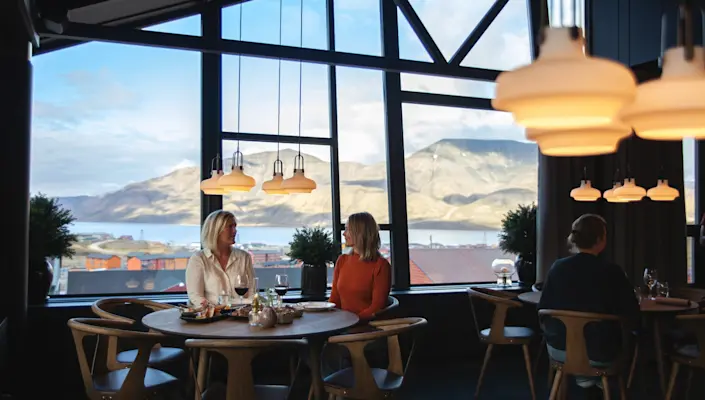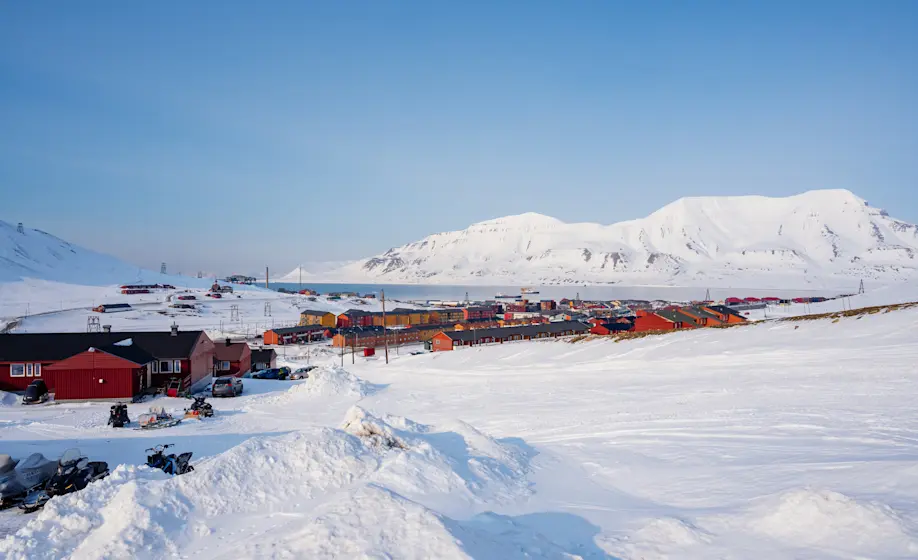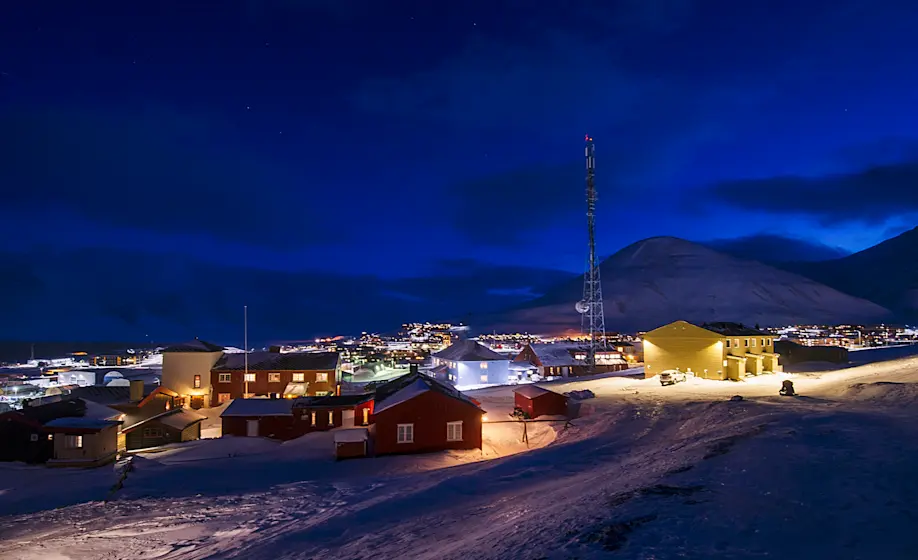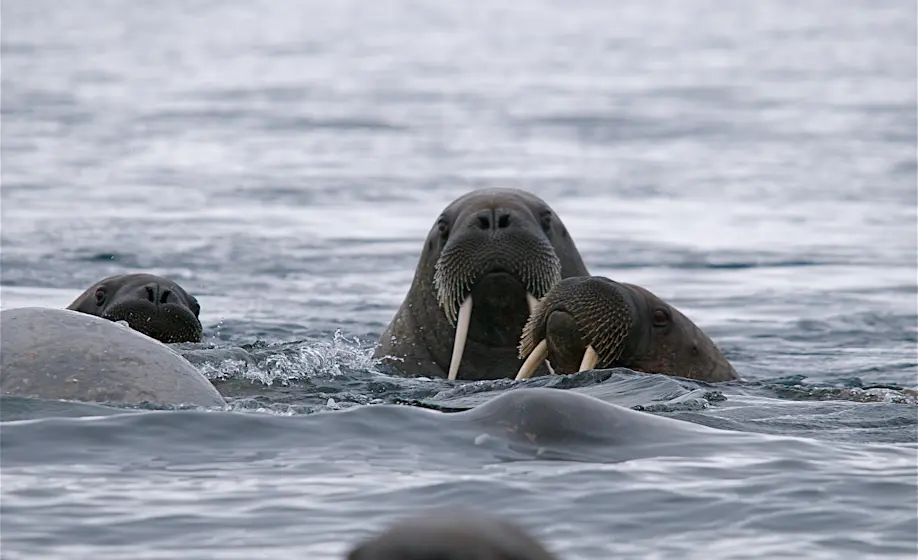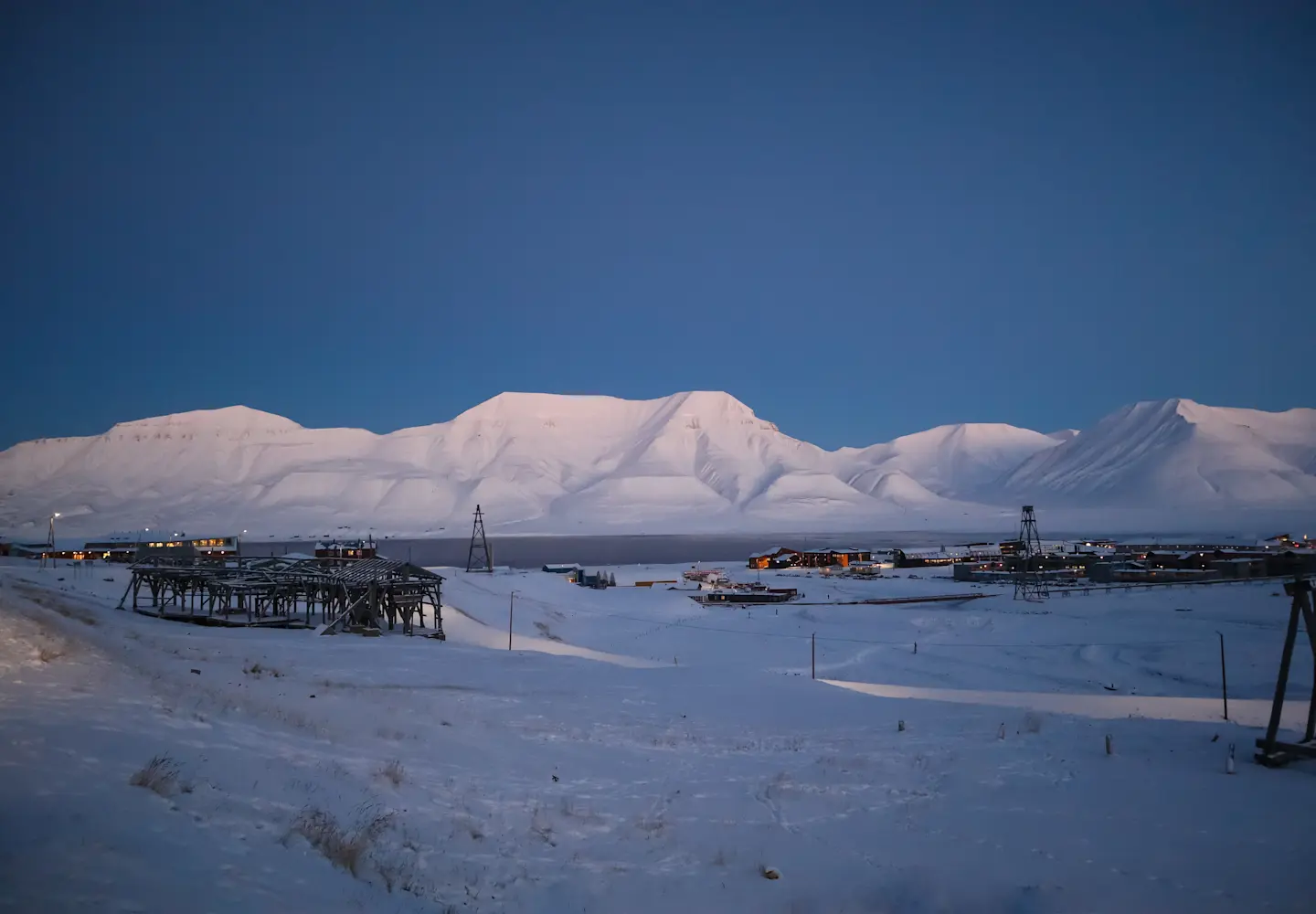
Svalbard vs. Northern Norway: Which Arctic adventure is right for you?
Planning an Arctic trip? Both Svalbard and Northern Norway promise unforgettable experiences, but they offer them in different ways.
If you’re dreaming of an Arctic holiday, you might be looking at two options: the Svalbard archipelago or Northern Norway, home to places like Tromsø, Lofoten, Bodø and Kirkenes. Both are incredible, but they offer different experiences.
Here’s what to expect when it comes to prices, activities, nature, wildlife, northern lights, and crowds.
Accessibility & atmosphere
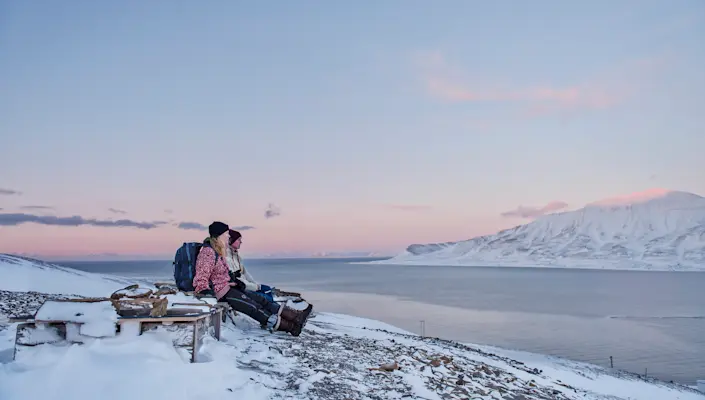
Northern Norway is well-connected, with multiple airports, ferries, and road networks that make it easy to combine several towns in one trip.
Svalbard feels entirely different, sitting at 78° north, just a short hop from the North Pole. Flights connect the town with Oslo and Tromsø, but once you arrive there are no roads between communities — instead you’ll travel by snowmobile, boat, or dog sled. The location alone makes it feel less like a typical holiday and more like stepping into an expedition.
Takeaway: Northern Norway is easier to get around on your own, but Svalbard offers a sense of adventure from the moment you land.
Crowds & vibe
Tromsø and Lofoten are popular and can be busy during peak season, with full hotels and big tour groups.
Svalbard is quieter and more exclusive, with carefully managed tourism and a population of just a few thousand. Even in summer, it feels calm and spacious, perfect if you want to escape the crowds.
Takeaway: Northern Norway has a lively atmosphere, while Svalbard offers tranquillity and the feeling of being far from the everyday world.
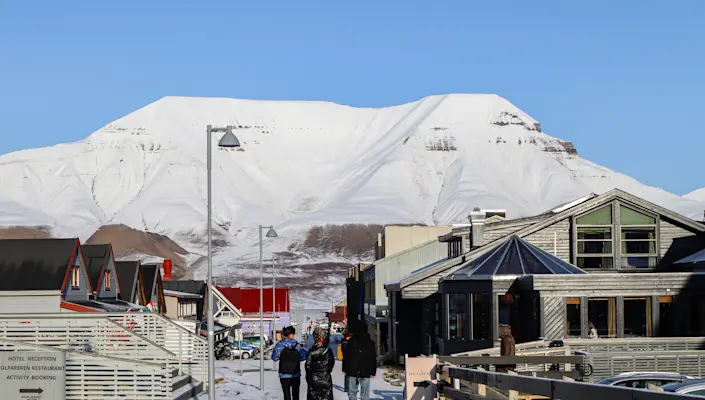
Dark season & Polar Night
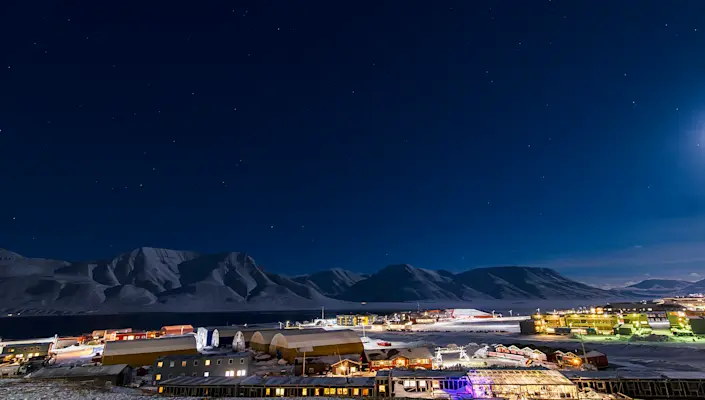
Northern Norway has long, dark winters, but there are still a few hours of twilight each day. Life goes on with streetlights, cosy cafés, and plenty of activity in the towns.
Svalbard is even more dramatic. From late October to mid-February, the sun never rises above the horizon, staying at least 6 degrees below it - a period known as the polar night. For several months in the middle of this season, it is completely dark 24 hours a day. Far from being gloomy, the darkness creates a magical atmosphere: snow sparkles under headlamps and the northern lights can appear at any hour.
Takeaway: Northern Norway offers a taste of Arctic darkness, but Svalbard’s polar night is something few people ever witness.
The changing Arctic light
One of the most remarkable things about travelling above the Arctic Circle is how much the light shapes the experience. In Northern Norway, the seasons bring long summer days with the midnight sun, colourful sunrises and sunsets in autumn, and a soft winter twilight that adds drama to the snow-covered landscapes.
On Svalbard, the effect is even more pronounced. After the deep darkness of the polar night, the first hint of daylight in February feels magical. February and March bring a soft, pastel-coloured light, followed by golden sunshine that reflects off the snow. Summer means 24 hours of daylight, and autumn paints the mountainsides in warm, golden tones as the sun dips below the horizon once again.
Takeaway: The light is an attraction in itself, changing the mood and scenery throughout year. Svalbard’s seasons in particular offer a front-row seat to some of the most dramatic light shifts on Earth.
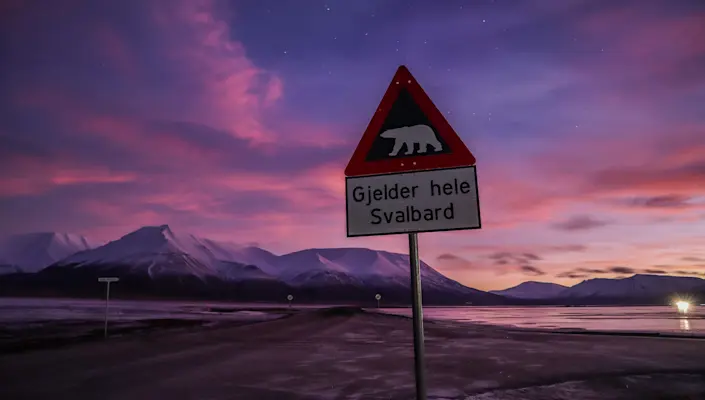
Northern Lights
Northern Norway sits directly under the auroral oval, so it boasts a high chance of spectacular northern light displays all winter. Towns like Tromsø offer easy access to guided aurora chases, but city lights can sometimes make the displays less vivid unless you head out of town.
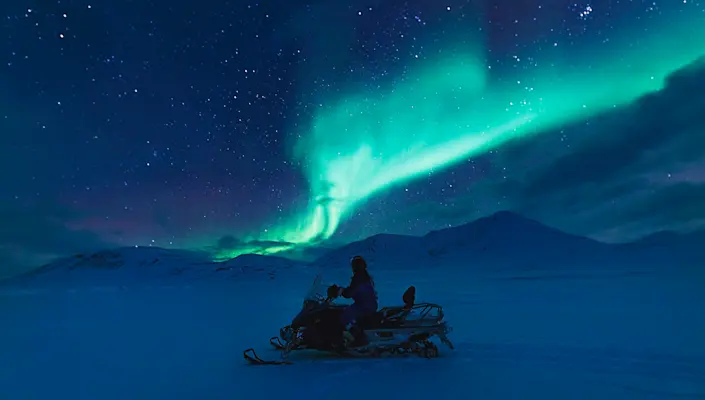
Svalbard offers something more remote and atmospheric. The aurora may be slightly less intense, but during the polar night you can sometimes see it even in the middle of the day, a magical and rare experience. Step just outside Longyearbyen and you’ll find almost no light pollution, which means the northern lights shine brilliantly above you on clear days, and you can even see the Milky Way stretching across the Arctic sky.
Takeaway: Northern Norway is a reliable aurora hotspot, while Svalbard offers a darker sky, a wilder backdrop, and northern lights experience that feels truly otherworldly.

Did you know?
Nature & Wildlife
Northern Norway is known for its dramatic fjords, lush summer landscapes, and excellent whale-watching opportunities.
Svalbard, meanwhile, is pure Arctic wilderness: glaciers tumbling into the sea, wide tundra plains, ice caves, and the possibility of spotting some of the Arctic’s most iconic animals. Walrus colonies, Arctic foxes, the Svalbard reindeer and, with a bit of luck, the polar bear. Of course, sightings are never guaranteed, which makes each experience feel even more special.
Takeaway: If you want wild, untouched Arctic landscapes and the chance to spot rare wildlife, Svalbard offers an experience unlike anywhere else in Europe.

Activities
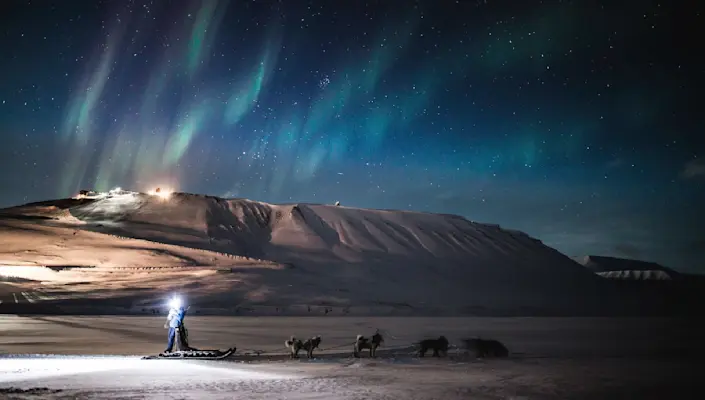
Northern Norway offers a mix of classic Arctic adventures and cultural highlights. You can go hiking, skiing, head out on a whale safari, try deep-sea fishing, or immerse yourself in Sámi culture.
Svalbard takes things up a notch. Here, almost every activity feels like an expedition: snowmobiling across frozen fjords, dog sledding under a star-filled sky, cruising past blue-tinged glaciers in summer, or kayaking quietly among drifting ice. Even a simple hike feels different when you’re accompanied by an armed guide and surrounded by endless Arctic tundra. And while these adventures sound daring, most are designed to be suitable for all, you don’t need to be an experienced explorer to join.
Takeaway: Northern Norway is a good choice if you want variety and comfort, while Svalbard delivers adventure with a true Arctic edge.
Prices & value
Northern Norway offers a big choice when it comes to accommodation and restaurants, making it easy to match your budget. But during peak aurora season, hotel prices in Tromsø can skyrocket, and options can sell out months in advance, something to keep in mind if you prefer to book last minute.
Svalbard is slightly more expensive overall due to its remote location, but it might surprise you how many choices you actually have. Longyearbyen offers a wide range of places to stay, from cosy guesthouses and modern hotels to luxury experiences, as well as a thriving dining scene that ranges from casual pubs to fine dining. Just like on the mainland, the price range varies, so there’s usually something to suit different budgets. On top of that, Svalbard is tax-free, meaning a glass of wine or a craft beer can cost less than it does in Tromsø or Oslo. Outdoor gear and clothing are also often cheaper here than on the mainland, making it a good place to pick up quality equipment.
Takeaway: Northern Norway has a broader range of prices overall, but Svalbard combines variety with the unique feeling of being far north, making the experience feel extra special.
